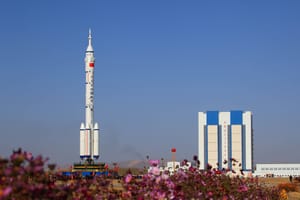
Disclaimer: This article was written on the 20th of December so some information may be outdated.
Additional disclaimer: This article may take a while to load as where possible a relevant image is used.
This article is intended as a general explainer of China's state-owned and operated Long March launch vehicles. This will include in-service and in-development Long March rockets.
Some variants of some Long March rockets may be grouped together or separated due to differences or similarities.
Why are the rockets called Long March?
The Long March rocket series is named after the retreat of the First Red Army from the 16th of October 1934 to the 19th of October 1935 led by Mao Zedong. The First Red Army marched over 9,000 kilometers from the province of Jiangxi, in southern China, to the province of Yan'an, in northern China.
The Long March is believed to have saved the communist forces in the Chinese Civil War who ultimately won the civil war in December of 1947.
What is the Long March rocket series?
The Long March rocket series is currently a family of expendable rockets launched by the People's Republic of China and manufactured by state-owned companies. The Long March rockets are launched from the Jiuquan Satellite Launch Center, the Xichang Satellite Launch Center, the Taiyuan Satellite Launch Center, the Wenchang Space Launch Site, and various sea launch platforms.
As of the writing of this article, the Long March rocket series has launched five-hundred and two times.
Modern operational Long March rockets
This section includes Long March rockets based on newer designs that have entered service in the past decade.
Long March 11
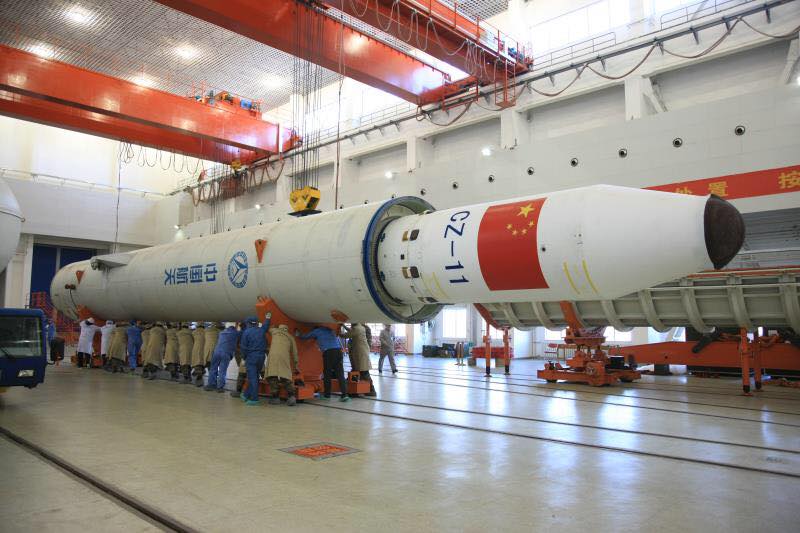
The Long March 11 rocket is a four-stage launch vehicle burning a solid propellant on all of its stages.
As of writing the Long March 11 has launched sixteen times with no failures since entering service in September of 2015. The rocket has been launched from Jiuquan Satellite Launch Center, Xichang Satellite Launch Center, and from ships in the Yellow Sea.
The Long March 11 is claimed to be able to deliver 700 kilograms to low Earth orbit, or 350 kilograms to a 700-kilometer sun-synchronous orbit.
Information on the second, third, and fourth stages is largely unknown outside of China, along with the solid propellant mixture. However, it is known that the first stage generates 122 tons of thrust for one minute and eleven seconds burning its solid propellant.
The Long March 11 is manufactured by the China Academy of Launch Vehicle Technology and weighs 58,000 kilograms when prepped for launch. When on its launch pad the rocket is 20.8 meters tall.
Long March 7 & 7A
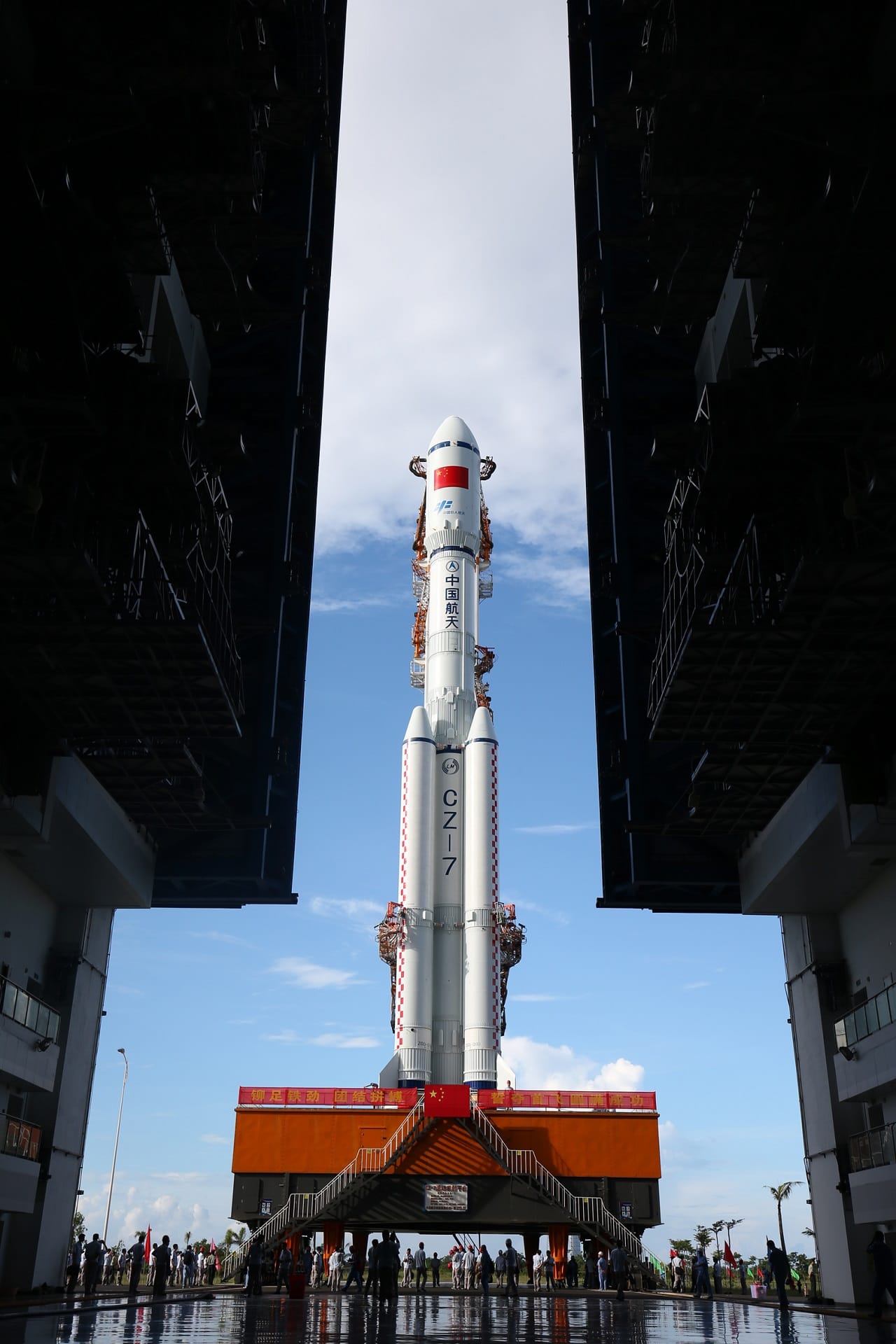
The Long March 7 is a two-stage launch vehicle burning rocket-grade kerosene and liquid oxygen in its first-stage, second-stage, and boosters. The Long March 7 is also able to use four, two, or no boosters for launching payloads. There is also a variant of the Long March 7 with a third stage burning hydrogen and oxygen called the Long March 7A.
The Long March 7 has launched seven times with no failures with the 7A launching six times with one failure. The Long March 7 entered service in June of 2016 with the Long March 7A entering service in March of 2020. So far the Long March 7 and 7A has only launched from the Wenchang Space Launch Site.
The Long March 7 is capable of launching up to 13,500 kilograms to low Earth orbit, or 4,400 kilograms to a 700-kilometer sun-synchronous orbit. Using the Long March 7A the rocket is capable of sending up to 7,000 kilograms to geosynchronous transfer orbit.
Each booster is powered by a YF-100 engine generating 122 tons of thrust burning rocket-grade kerosene and liquid oxygen. With two boosters on the rocket, the booster provides 245 tons of thrust, and with four boosters providing 489 tons of thrust. The burn time of the boosters is unknown outside of China excluding approximations made from launch footage.
The first-stage is powered by two YF-100 engines generating 245 tons of thrust burning rocket-grade kerosene and liquid oxygen. The burn time of the first-stage is also unknown outside of China.
The second-stage is powered by four YF-115 engines generating 72 tons of thrust from burning rocket-grade kerosene and liquid oxygen. Once again, the burn time of the second-stage is unknown outside of China.
The third-stage, used on the Long March 7A, is powered by two YF-75 engines generating 17 tons of thrust burning liquid hydrogen and liquid oxygen for seven minutes and fifty-eight seconds.
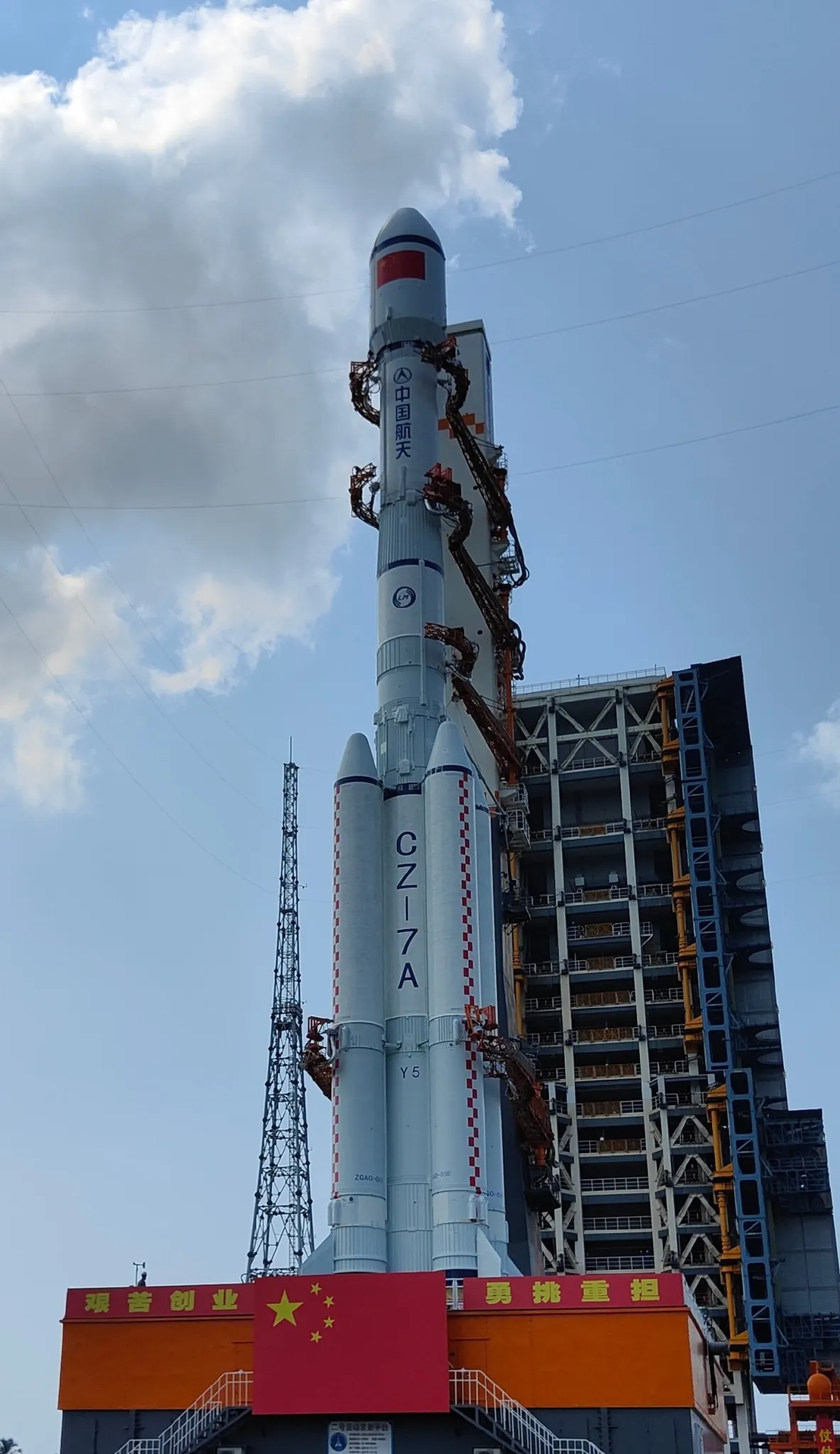
The Long March 7 and 7A are manufactured by the China Academy of Launch Vehicle Technology. When fully fuelled the Long March 7 weighs 597,000 kilograms with the Long March 7A weighing 573,000 kilograms fully fuelled. This is due to a believed shortening of the second stage. When on the launch pad the Long March 7 is 53.1 meters tall with the Long March 7A being 60.1 meters tall. The Long March 7A is taller due to the third stage holding liquid hydrogen, which is not a dense fuel.
Long March 8
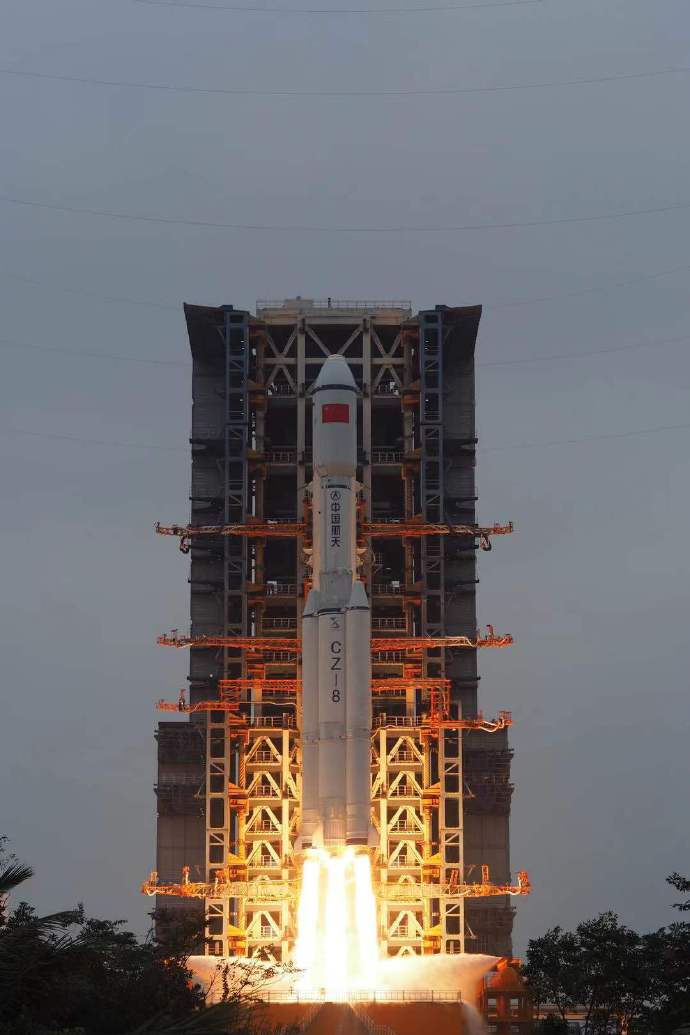
The Long March 8 is a two-stage launch vehicle burning rocket-grade kerosene and liquid oxygen in its first-stage and boosters with it burning liquid hydrogen and liquid oxygen in its second-stage.
The Long March 8 has currently launched two times with no failures since entering service in December of 2020. So far the Long March 8 has only launched from the Wenchang Space Launch Site.
There are also plans to make the Long March 8 partially reusable by landing the first-stage and boosters together downrange on a drone ship. The first-stage would be guided by grid fins to the drone ship before relighting its engines and deploying landing legs to land.
The Long March 8 is capable of lifting up to 8,100 kilograms to low Earth orbit, 5,000 kilograms to a 700-kilometer sun-synchronous orbit, or 2,800 kilograms to a geosynchronous transfer orbit.
Each booster is powered by a YF-100 engine generating 122 tons of thrust burning rocket-grade kerosene and liquid oxygen. With two boosters on the rocket, the booster provides 245 tons of thrust. The burn time of the boosters is unknown outside of China excluding approximations made from launch footage.
The first-stage is powered by two YF-100 engines generating 245 tons of thrust burning rocket-grade kerosene and liquid oxygen. The burn time of the first-stage is also unknown outside of China.
The second-stage is powered by two YF-75 engines generating 17 tons of thrust burning liquid hydrogen and liquid oxygen. The burn time is also unknown outside of China.
The Long March 8 is manufactured by the China Academy of Launch Vehicle Technology and weighs up to 356,000 kilograms fully fuelled. When on the pad the rocket is 50.3 meters tall.
Long March 6
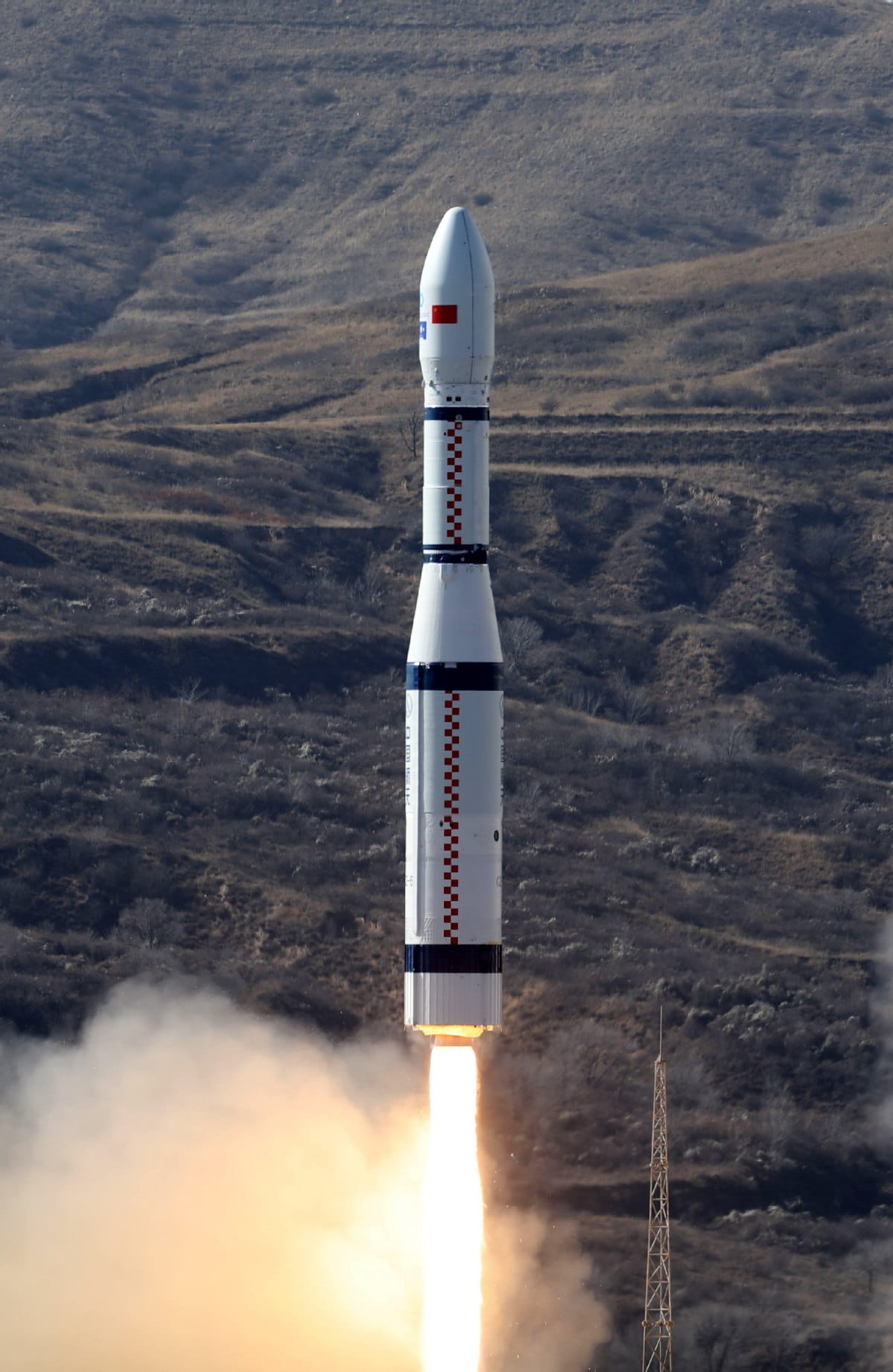
The Long March 6 is a three-stage launch vehicle burning rocket-grade kerosene and liquid oxygen in the first and second stages as well as Dinitrogen Tetroxide and Unsymmetrical Dimethylhydrazine in the third-stage.
The Long March 6 has currently launched eleven times with no failures since entering service in September of 2015. So far the Long March 6 has only launched from the Taiyuan Satellite Launch Center.
The Long March 6 is claimed to be able to deliver 1,080 kilograms of payload to a 700-kilometer sun-synchronous orbit.
The first-stage is powered by a YF-100 engine generating 122 tons of thrust burning rocket-grade kerosene and liquid oxygen. The burn time of the first-stage is currently unknown outside of China.
The second-stage is powered by a YF-115 generating 18 tons of thrust burning rocket-grade kerosene and liquid oxygen. The burn time of the second-stage is also unknown outside of China.
The third-stage is powered by an unknown engine generating 0.66 tons of thrust burning Dinitrogen Tetroxide and Unsymmetrical Dimethylhydrazine. Any more information on this stage is unknown outside of China currently.
The Long March 6 is manufactured by the Shanghai Academy of Spaceflight Technology and weighs 103,000 kilograms fully fuelled. When on the pad the launch vehicle is 29 meters tall.
Long March 6A
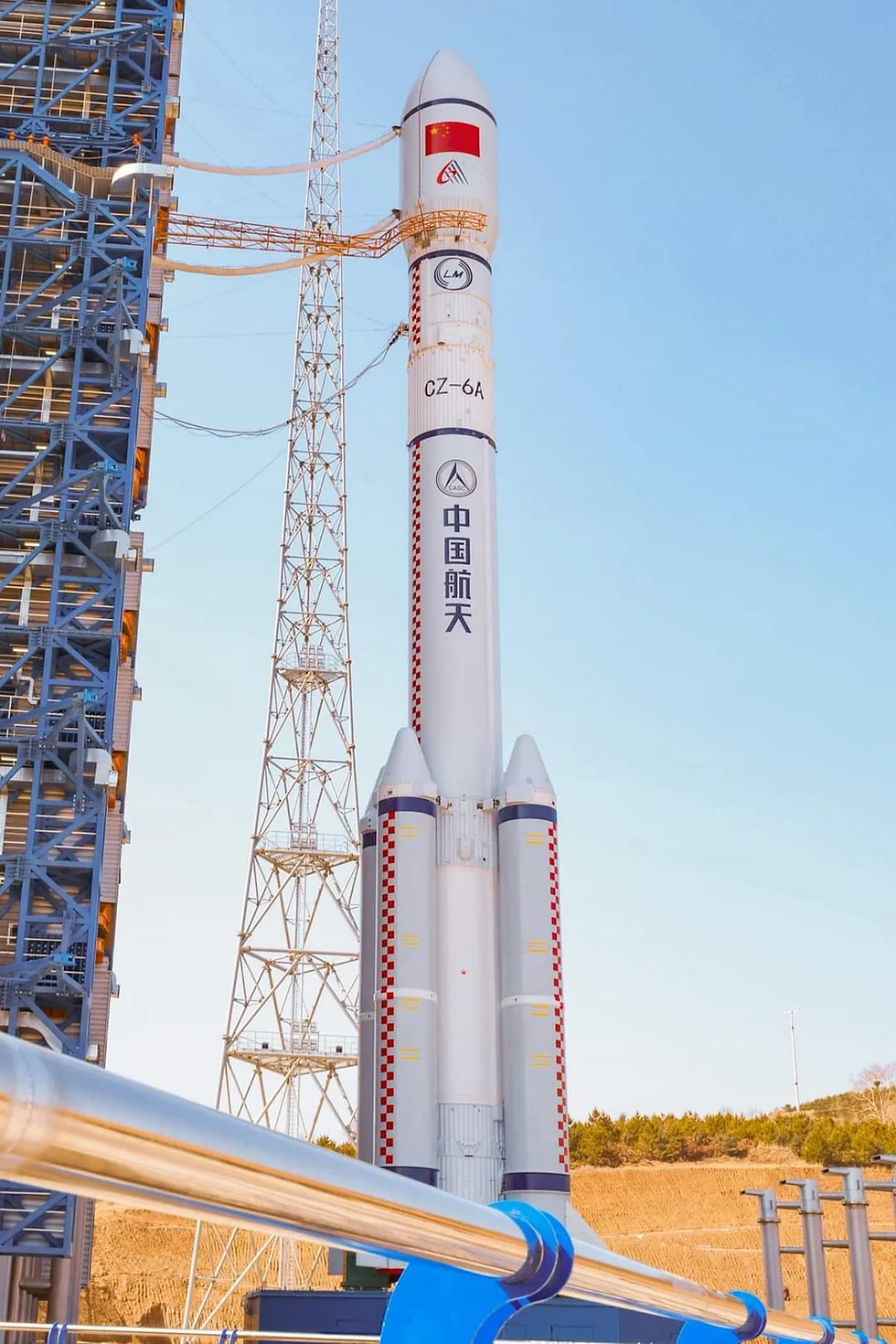
The Long March 6A is a two-stage launch vehicle burning rocket-grade kerosene and liquid oxygen in its first and second stages. The rocket also has four boosters burning a solid propellant.
The Long March 6A is derived from the Long March 6 and has a stretched first stage and a wider diameter second stage. It also features solid rocket boosters attached to the first stage.
The Long March 6A has currently launched four times with no failures since entering service in March of 2022. So far the Long March 6A has only launched from the Taiyuan Satellite Launch Center.
The Long March 6A is claimed to be able to deliver 4,500 kilograms of payload to a 700-kilometer sun-synchronous orbit.
The solid rocket boosters generate 124 tons of thrust each burning their solid propellant. The solid rocket boosters generate a combined thrust of 492 tons of thrust. The burn time of the boosters are unknown outside of China.
The first-stage is powered by two YF-100 engines generating 242 of thrust burning rocket-grade kerosene and liquid oxygen. The burn time of the first-stage is currently unknown outside of China excluding approximations made from launch footage.
The second-stage is powered by a YF-115 generating 18 tons of thrust burning rocket-grade kerosene and liquid oxygen. The burn time of the second-stage is once again unknown outside of China.
The Long March 6A is manufactured by the Shanghai Academy of Spaceflight Technology and weighs 530,000 kilograms fully fuelled. When on the pad the rocket is 50 meters tall.
Long March 5 & 5B
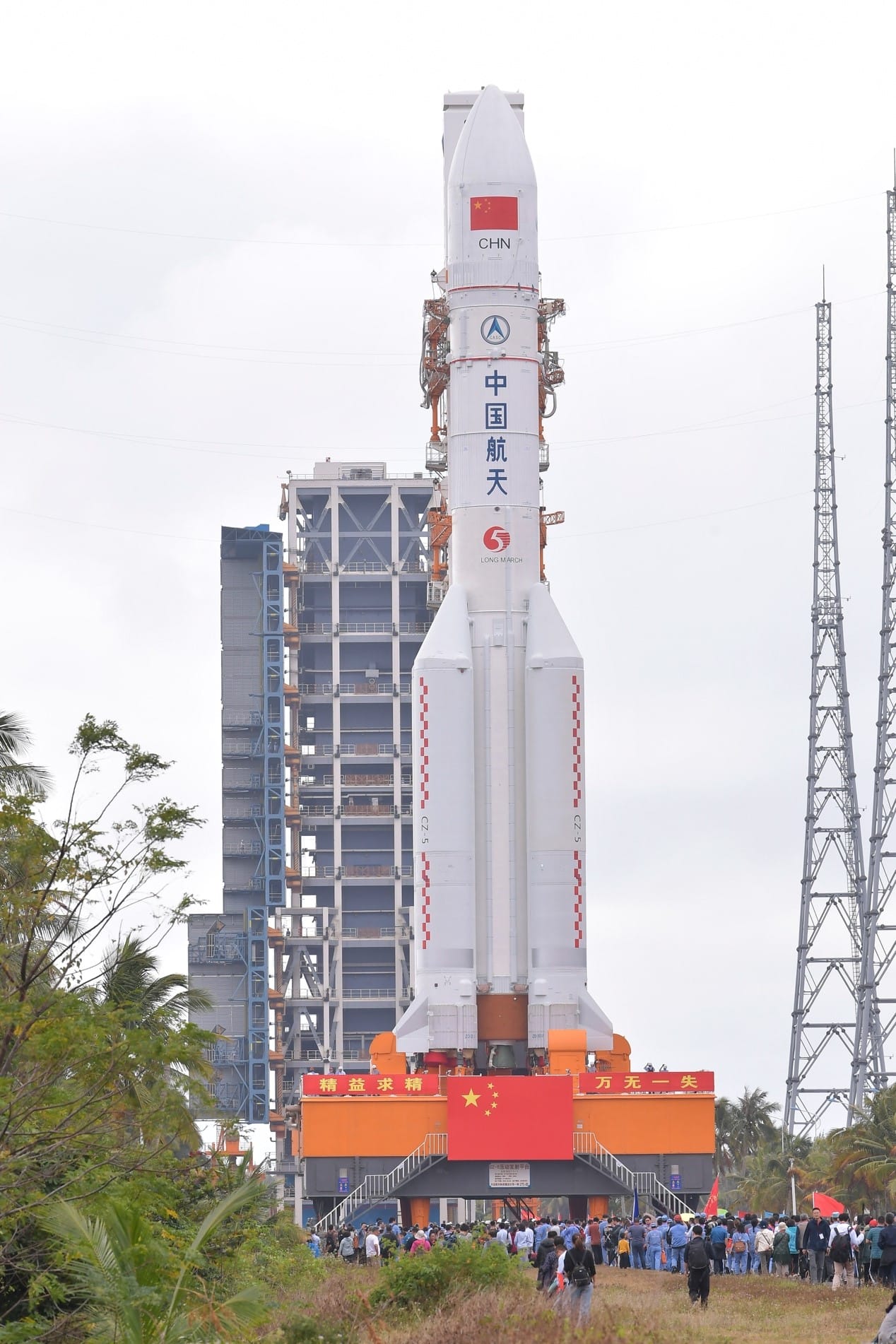
The Long March 5 is a two-stage launch vehicle that burns liquid hydrogen and liquid oxygen in its first and second stages as well as burning rocket-grade kerosene and liquid oxygen in its boosters. For the Long March 5B variant, the second stage is not present. The Long March 5 and 5B rockets also have three possible fairings; an 18.5 meter fairing, a 12.3 meter fairing, and another smaller fairing mainly used on deep space missions.
The Long March 5 has flown six times with one failure. The Long March 5B variant has flown four times with no failures. So far the Long March 5 and 5B have only launched from the Wenchange Space Launch Site. The Long March 5 entered service in November of 2016 with the Long March 5B entering service in May of 2020.
The Long March 5 rockets can place up to 25,000 kilograms into low Earth orbit, 14,000 kilograms into geosynchronous transfer orbit, up to 9,400 kilograms on a trans-lunar injection, 5,100 kilograms directly into geostationary orbit, and up to 15,000 kilograms into sun-synchronous orbit.
The four boosters are powered by two YF-100 engines each generating 245 tons of thrust each burning rocket-grade kerosene and liquid oxygen for two minutes and fifty-three seconds. The four boosters have a combined thrust of 979 tons of thrust.
The first-stage is powered by two YF-77 engines generating 143 tons of thrust burning liquid hydrogen and liquid oxygen for eight minutes and twelve seconds.
The second-stage is powered by two YF-75D engines generating 18 tons of thrust burning liquid hydrogen and liquid oxygen for eleven minutes and forty seconds.
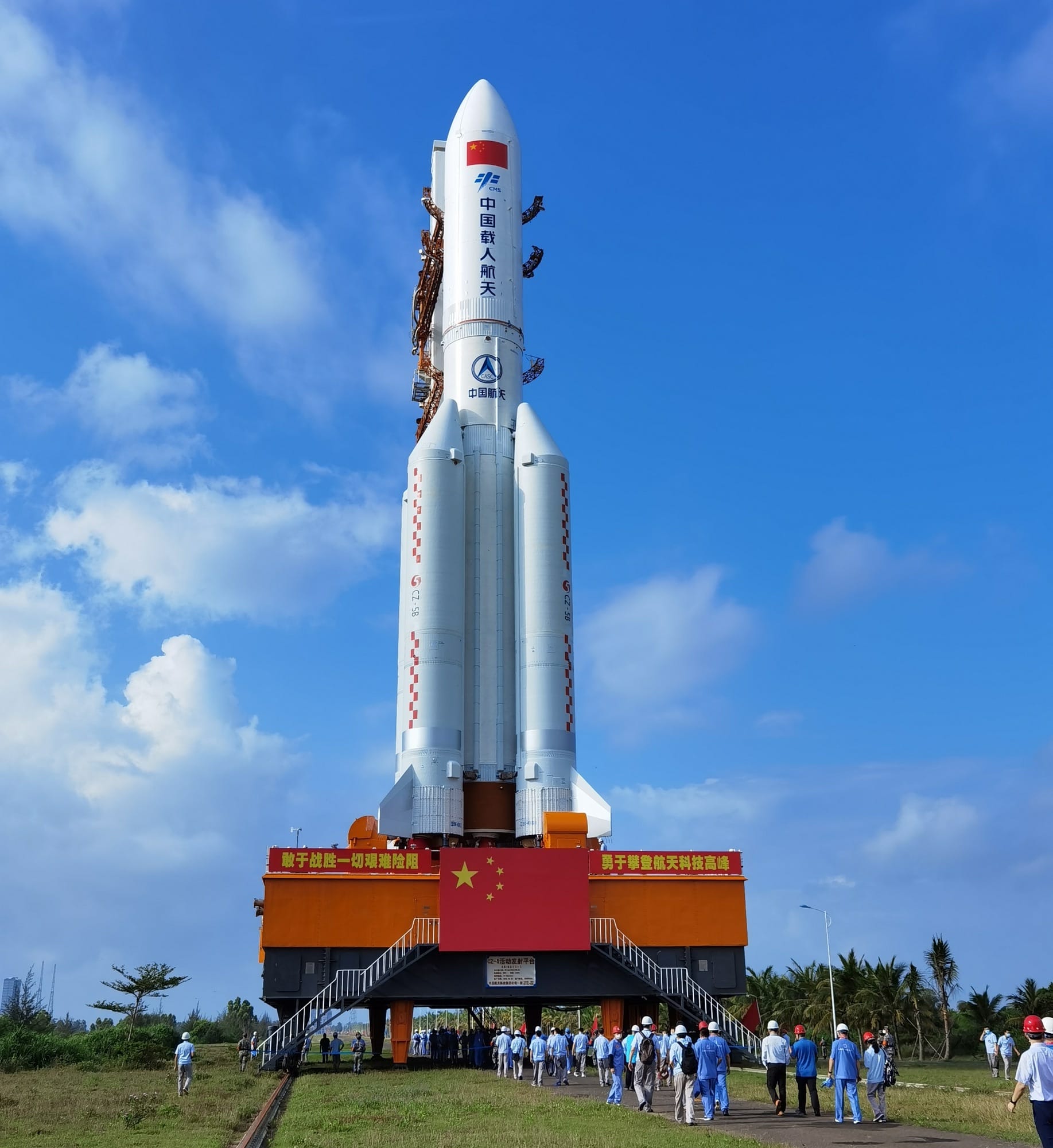
The Long March 5 and 5B are manufactured by the China Academy of Launch Vehicle Technology and weighs up to 854,500 kilograms fully fuelled. When on the pad the rocket can be over 60 meters tall.
Legacy operational Long March rockets
This section includes Long March rockets based on older designs that entered service over a decade ago. Legacy Long March rockets also use much more dangerous propellants.
Long March 4B
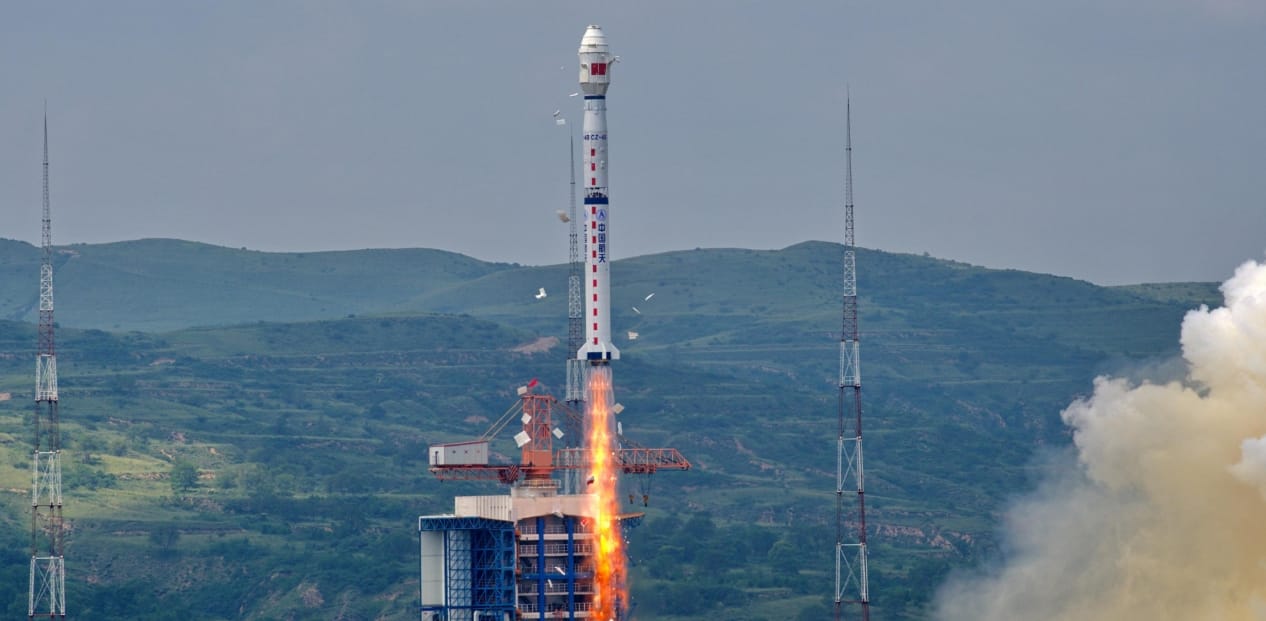
The Long March 4B is a three-stage rocket that burns Dinitrogen Tetroxide and Unsymmetrical Dimethylhydrazine in all three of its stages.
The Long March 4B has flown forty-eight times with one failure since entering service in May of 1999. The Long March 4B currently has launch pads at the Jiuquan Satellite Launch Center and the Taiyuan Satellite Launch Center.
The Long March 4B is believed to be able to place up to 4,200 kilograms to low Earth orbit, 2,800 kilograms to a sun-synchronous orbit, or 1,500 kilograms to a geosynchronous transfer orbit.
The first-stage is powered by four YF-21C engines generating 302 tons of thrust burning Dinitrogen Tetroxide and Unsymmetrical Dimethylhydrazine. The exact burn time for the first stage is currently unknown outside of China.
The second-stage is powered by one YF-24C engine generating 80 tons of thrust burning Dinitrogen Tetroxide and Unsymmetrical Dimethylhydrazine. Once again the exact burn time is currently unknown outside of China.
The third-stage is powered by two YF-40 engines generating 10 tons of thrust burning Dinitrogen Tetroxide and Unsymmetrical Dimethylhydrazine. The exact burn time is once again currently unknown outside of China.
The Long March 4B is manufactured by the Shanghai Academy of Spaceflight Technology and weighs 249,200 kilograms when fully fuelled. When on the pad the rocket is 44.1 meters tall.
Long March 4C
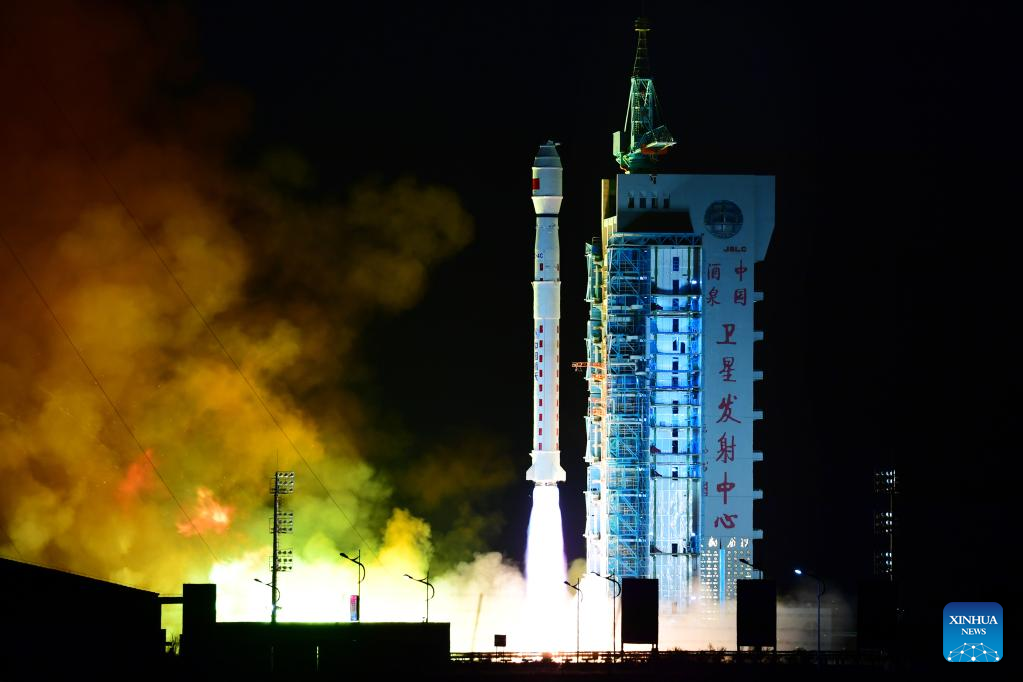
The Long March 4C is a three-stage rocket that burns Dinitrogen Tetroxide and Unsymmetrical Dimethylhydrazine in all three of its stages.
The Long March 4C has flown fifty-three times with two failures since entering service in April of 2006. The Long March 4C currently has launch pads at the Xichang Satellite Launch Center, the Jiuquan Satellite Launch Center, and the Taiyuan Satellite Launch Center.
The Long March 4C is believed to be able to place up to 4,200 kilograms to low Earth orbit, 2,800 kilograms to a sun-synchronous orbit, or 1,500 kilograms to a geosynchronous transfer orbit.
The first-stage is powered by four YF-21C engines generating 302 tons of thrust burning Dinitrogen Tetroxide and Unsymmetrical Dimethylhydrazine. The exact burn time for the first stage is currently unknown outside of China.
The second-stage is powered by one YF-24C engine generating 80 tons of thrust burning Dinitrogen Tetroxide and Unsymmetrical Dimethylhydrazine. Once again the exact burn time is currently unknown outside of China.
The third-stage is powered by two YF-40A engines generating 10 tons of thrust burning Dinitrogen Tetroxide and Unsymmetrical Dimethylhydrazine. The exact burn time is once again currently unknown outside of China.
While seeming like a copy of the Long March 4B the 4C has a larger payload fairing and restartable third-stage in-space.
The Long March 4C is manufactured by the Shanghai Academy of Spaceflight Technology and weighs 250,000 kilograms when fully fuelled. When on the pad the rocket is 45.8 meters tall.
Long March 3A
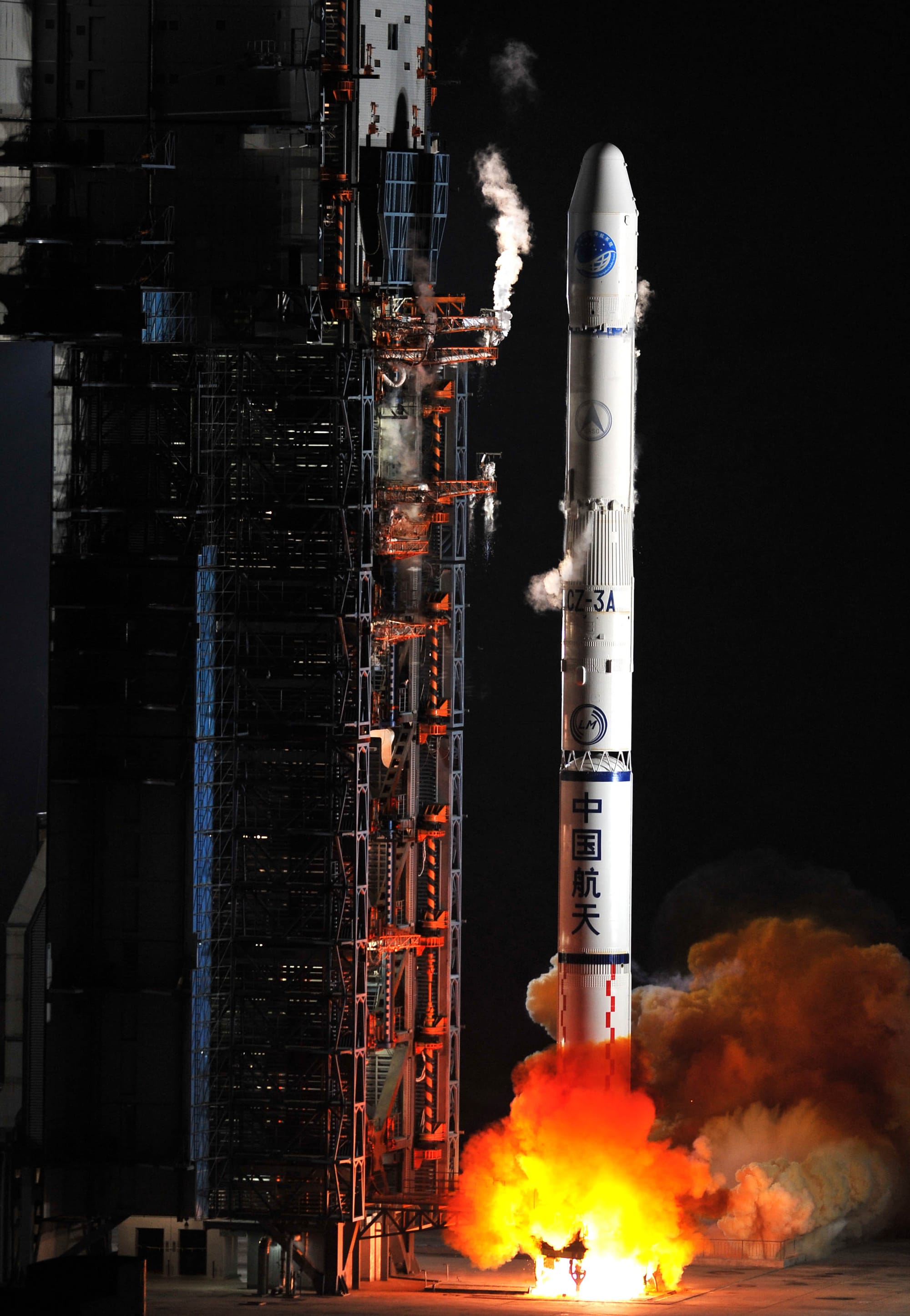
The Long March 3A is a three-stage rocket that burns Dinitrogen Tetroxide and Unsymmetrical Dimethylhydrazine in its first and second stages. The third-stage burns liquid hydrogen and liquid oxygen.
The Long March 3A has flown twenty-seven times with no failures since entering service in February of 1994. The Long March 3A currently has launch pads at the Xichang Satellite Launch Center.
The Long March 3A is believed to be able to place up to 8,500 kilograms to low Earth orbit, 2,600 kilograms to geosynchronous transfer orbit, or 1,600 kilograms to a heliocentric orbit.
The first-stage is powered by four YF-21C engines generating 302 tons of thrust burning Dinitrogen Tetroxide and Unsymmetrical Dimethylhydrazine for two minutes and twenty-eight seconds.
The second-stage is powered by one YF-24E engine generating 80 tons of thrust burning Dinitrogen Tetroxide and Unsymmetrical Dimethylhydrazine for one minute and fifty-five seconds.
The third-stage is powered by two YF-75 engines generating 17 tons of thrust burning liquid hydrogen and liquid oxygen for seven minutes and fifty-five seconds.
The Long March 3A is manufactured by the China Academy of Launch Vehicle Technology and weighs 241,000 kilograms when fully fuelled. When on the pad the launch vehicle is 52.5 meters tall.
Long March 3B/E
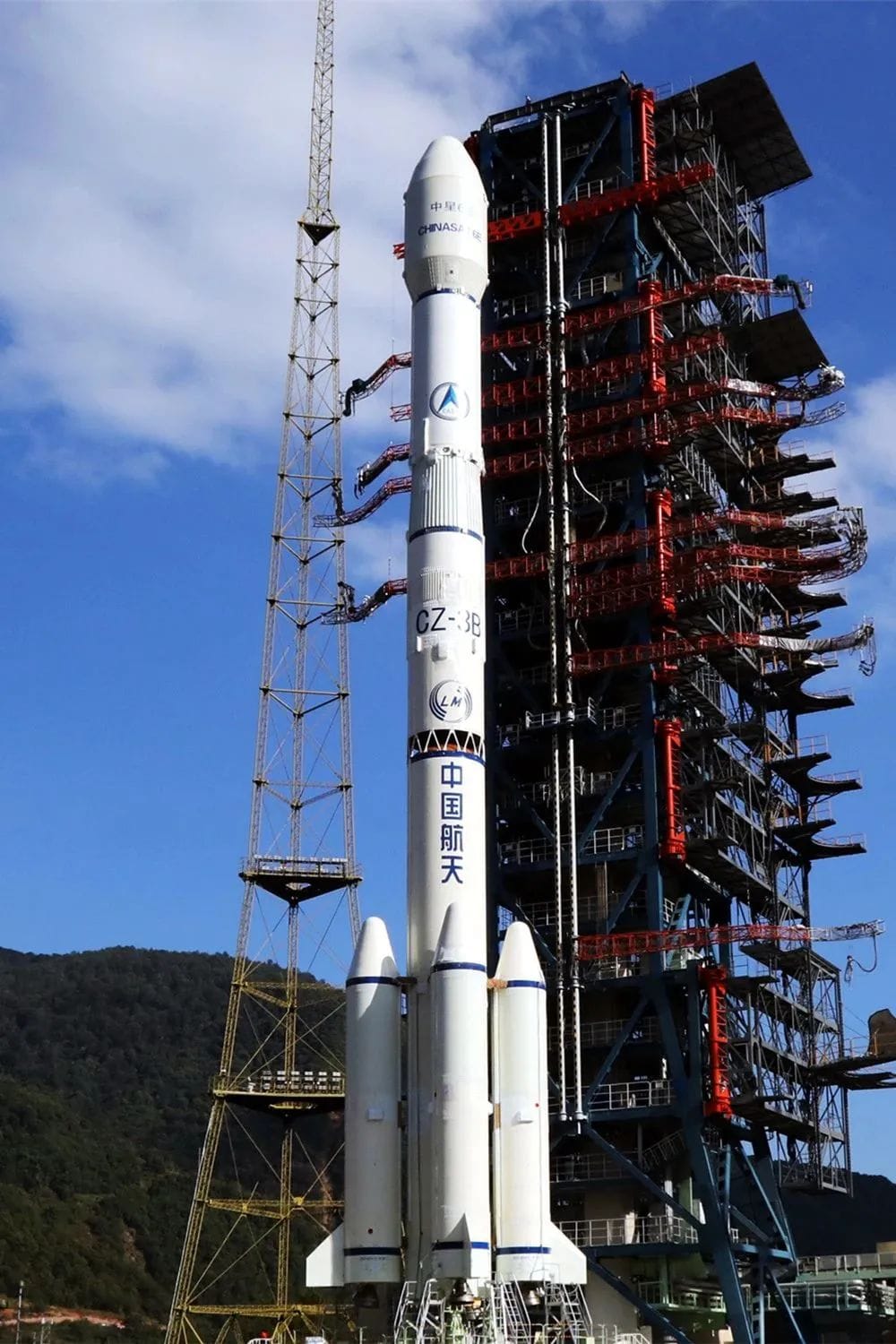
The Long March 3B/E is a three-stage rocket that burns Dinitrogen Tetroxide and Unsymmetrical Dimethylhydrazine in its first and second stages as well as its boosters. The third-stage burns liquid hydrogen and liquid oxygen.
The Long March 3B/E has flown eighty times with two failures since entering service in May of 2007. The Long March 3B/E has launch pads at the Xichang Satellite Launch Center.
The Long March 3B/E is claimed as being able to lift up to 11,500 kilograms to low Earth orbit, 7,100 kilograms to a sun-synchronous orbit, 5,500 kilograms to a geosynchronous transfer orbit, 2,000 kilograms to a geostationary orbit, or 3,300 kilograms to a heliocentric orbit.
The boosters are each powered by one YF-25 engine generating 75 tons of thrust burning Dinitrogen Tetroxide and Unsymmetrical Dimethylhydrazine for two minutes and twenty seconds. The four boosters have a combined thrust of 302 tons of thrust.
The first-stage is powered by four YF-21C engines generating 302 tons of thrust burning Dinitrogen Tetroxide and Unsymmetrical Dimethylhydrazine for two minutes and thirty-eight seconds.
The second-stage is powered by one YF-24E engine generating 80 tons of thrust burning Dinitrogen Tetroxide and Unsymmetrical Dimethylhydrazine for three minutes and five seconds.
The third-stage is powered by two YF-75 engines generating 17 tons of thrust burning liquid hydrogen and liquid oxygen for seven minutes and fifty-eight seconds.
The Long March 3B/E is manufactured by the China Academy of Launch Vehicle Technology and weighs 458,970 kilograms when fully fuelled. When on the pad the launch vehicle is 56.3 meters tall.
Long March 3C/E
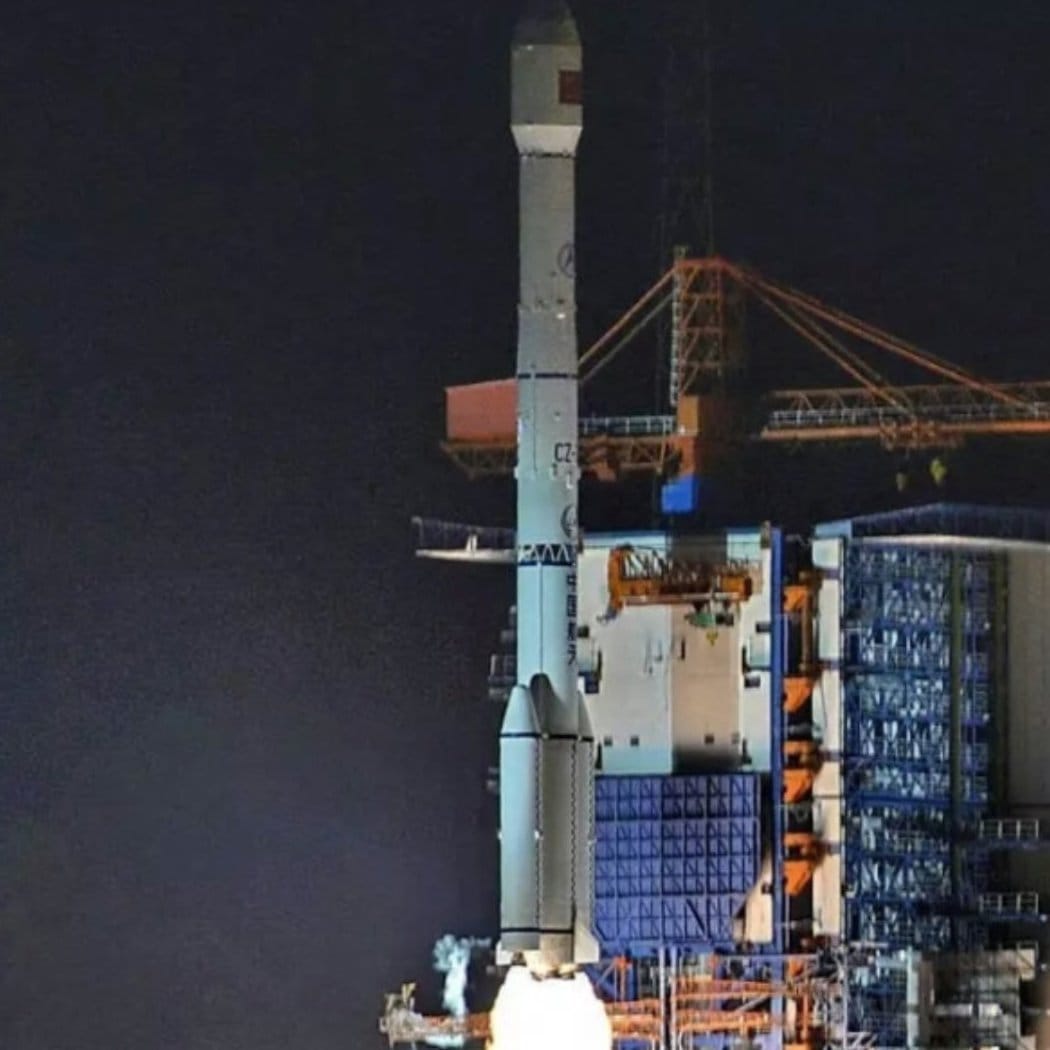
The Long March 3C/E is a three-stage rocket that burns Dinitrogen Tetroxide and Unsymmetrical Dimethylhydrazine in its first and second stages as well as its boosters. The third-stage burns liquid hydrogen and liquid oxygen.
The Long March 3C/E has flown eighteen times with no failures since entering service in October of 2014, this number may not be accurate as the statistics of the 3C/E is included in the record of the Long March 3C. The Long March 3C/E has launch pads at the Xichang Satellite Launch Center.
The Long March 3C/E is claimed as being able to lift up to 8,000 kilograms to low Earth orbit, 3,900 kilograms to a geosynchronous transfer orbit, or 2,400 kilograms to a heliocentric orbit.
The boosters are each powered by one YF-25 engine generating 75 tons of thrust burning Dinitrogen Tetroxide and Unsymmetrical Dimethylhydrazine for two minutes and twenty seconds. The two booster have a combined thrust of 151 tons of thrust.
The first-stage is powered by four YF-21C engines generating 302 tons of thrust burning Dinitrogen Tetroxide and Unsymmetrical Dimethylhydrazine for two minutes and thirty-eight seconds.
The second-stage is powered by one YF-24E engine generating 80 tons of thrust burning Dinitrogen Tetroxide and Unsymmetrical Dimethylhydrazine for three minutes and five seconds.
The third-stage is powered by one YF-75 engine generating 84 tons of thrust burning liquid hydrogen and liquid oxygen for eight minutes and seven seconds.
The Long March 3C/E is manufactured by the China Academy of Launch Vehicle Technology and weighs 345,000 kilograms. When on the pad the rocket is 55.6 meters tall.
Long March 2C
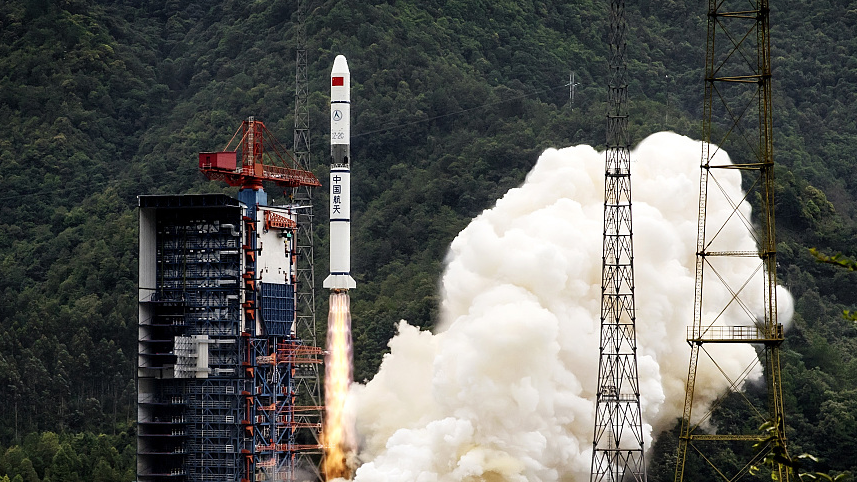
The Long March 2C is a two-stage rocket that burns Dinitrogen Tetroxide and Unsymmetrical Dimethylhydrazine in both stages.
The Long March 2C has flown seventy-three times with one failure since making its maiden flight in September of 1982. The Long March 2C has launch pads Jiuquan Satellite Launch Center, Xichang Satellite Launch Center, and Taiyuan Satelite Launch Center.
The Long March 2C is believed to be able to lift 3,850 kilograms to low Earth orbit, 1,900 kilograms to a sun-synchronous orbit, or 1,250 kilograms to geosynchronous transfer orbit.
The first-stage is powered by four YF-21C engines generating 302 tons of thrust burning Dinitrogen Tetroxide and Unsymmetrical Dimethylhydrazine. The exact burn time for the first-stage is unknown outside of China.
The second-stage is powered by one YF-24E engine generating 80 tons of thrust burning Dinitrogen Tetroxide and Unsymmetrical Dimethylhydrazine. Once again the exact burn time of the stage is unknown outside of China.
The Long March 2C is manufactured by the China Academy of Launch Vehicle Technology and weighs 233,000 kilograms when fully fuelled. On the launch pad, the rocket is 42 meters tall.
Long March 2D
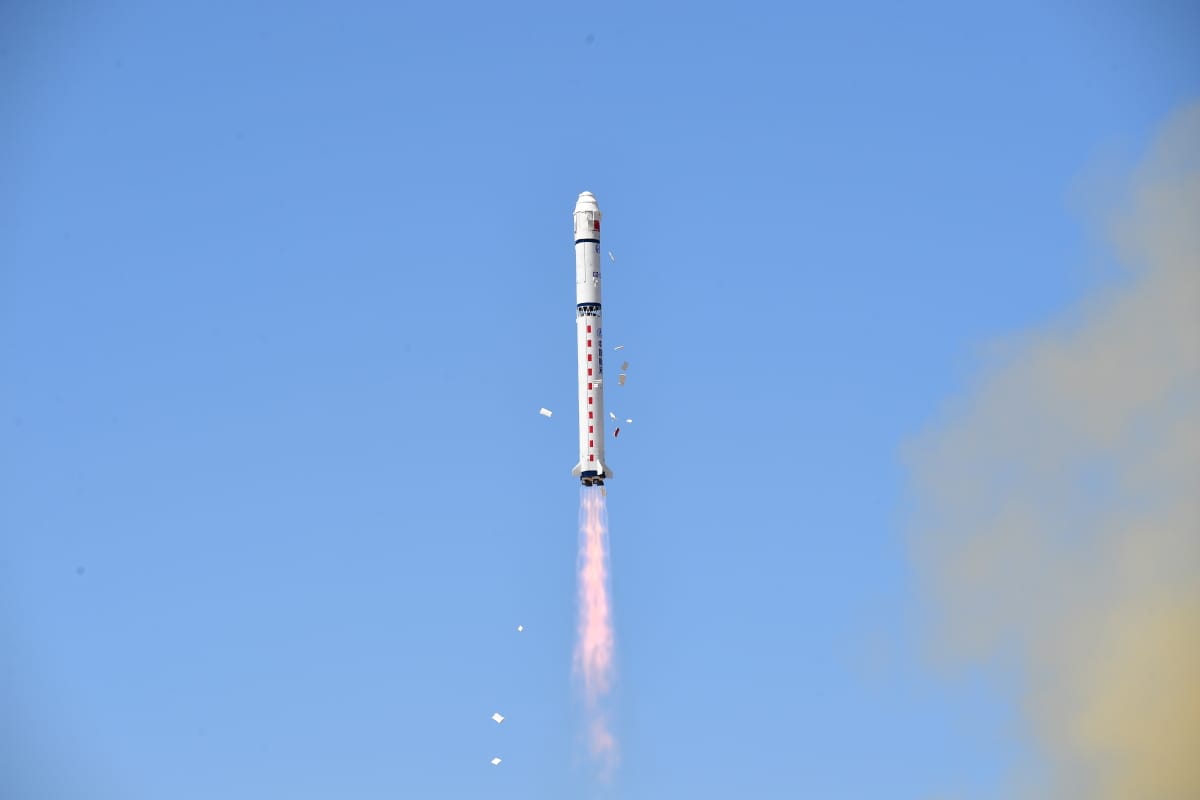
The Long March 2D is a two-stage rocket that burns Dinitrogen Tetroxide and Unsymmetrical Dimethylhydrazine in both of its stages.
The Long March 2D has flown eighty-five times with one failure since entering service in August of 1992. The Long March 2D has launch pads at the Xichange Satellite Launch Center, Taiyuan Satellite Launch Center, and the Jiuquan Satellite Launch Center.
Thee Long March 2D is believed to be able to lift 3,500 kilograms to low Earth orbit, or 1,300 kilograms to a sun-synchronous orbit.
The first-stage is powered by four YF-21C engines generating 302 tons of thrust burning Dinitrogen Tetroxide and Unsymmetrical Dimethylhydrazine. The exact burn time for the first-stage is currently unknown outside of China.
The second-stage is powered by one YF-24C engine generating 80 tons of thrust burning Dinitrogen Tetroxide and Unsymmetrical Dimethylhydrazine. Once again the exact burn time of the second-stage is unknown outside of China.
The Long March 2D is manufactured by the Shanghai Academy of Spaceflight Technology and weighs 232,250 kilograms when fully fuelled. When on the launch pad the rocket is 41 meters tall.
Long March 2F/G and 2F/T
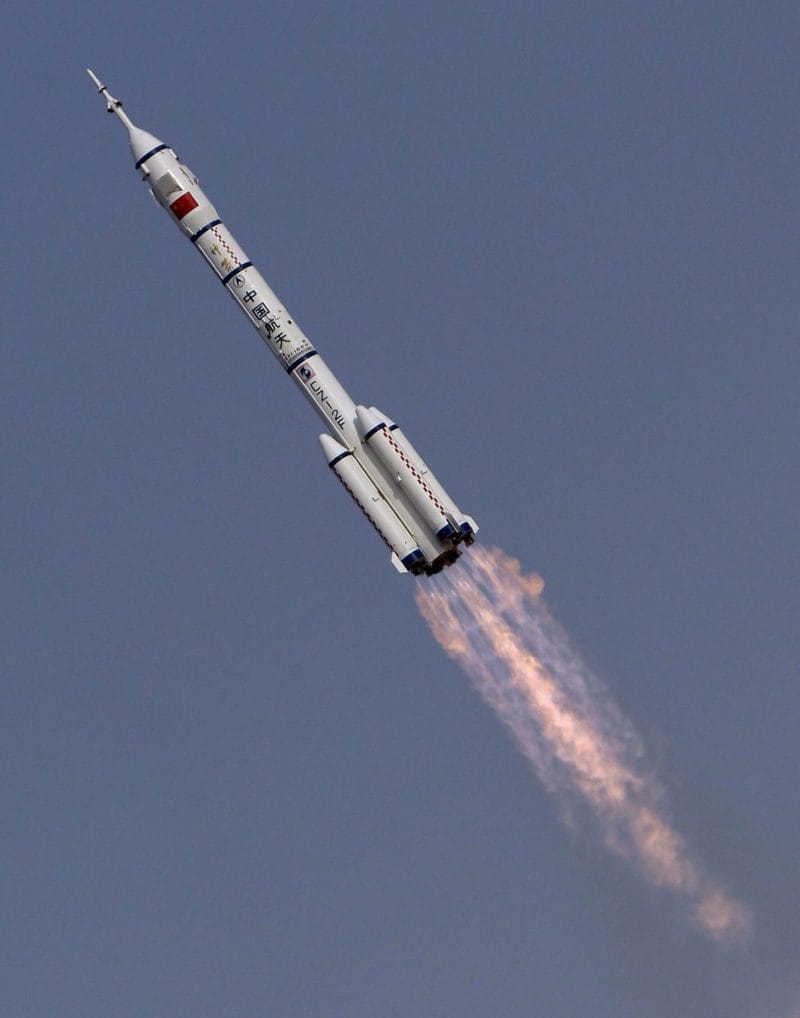
The Long March 2F/G is a tw0-stage rocket burning Dinitrogen Tetroxide and Unsymmetrical Dimethylhydrazine in both of its stages and boosters.
There is also the Long March 2F/T which is identical to the 2F/G in all but it's fairing. The 2F/T is currently used to launch China's reusable space vehicle.
The Long March 2F/G has been launched twenty-two times, this also included launches of the Long March 2F/T, with no failures since entering service in November of 1999. So far the Long March 2F/G has only launched from Jiuquan Satellite Launch Center.
The Long March 2F/G can place up to 8,400 kilograms into low Earth orbit.
The four boosters are powered by one YF-20B each generating 83 tons of thrust each burning Dinitrogen Tetroxide and Unsymmetrical Dimethylhydrazine for two minutes and eight seconds. The four boosters have a combined thrust of 332 tons of thrust.
The first-stage is powered by four YF-20B generating a combined 332 tons of thrust burning Dinitrogen Tetroxide and Unsymmetrical Dimethylhydrazine for two minutes and forty-six seconds.
The second-stage is powered by one YF-24B generating 85 tons of thrust burning Dinitrogen Tetroxide and Unsymmetrical Dimethylhydrazine for five minutes.
In-development Long March rockets
This section includes in-development Long March rockets that are expected to debut in the coming decade.
Long March 6C
The Long March 6C is two-stage rocket in development by the Shanghai Academy of Spaceflight Technology. The rocket plans to burn rocket-grade kerosene and liquid oxygen in both of its stages.
The Long March 6C is currently believed to make its maiden launch in the second half of 2024 from the Taiyuan Satellite Launch Center.
The currently planned payload capacity of the Long March 6C is 4,500 kilograms to low Earth orbit, or 2,000 kilograms to a 700-kilometer sun-synchronous orbit.
The first-stage is currently planning to use two YF-100 engines generating 242 tons of thrust burning rocket-grade kerosene and liquid oxygen. The expected burn time is currently unknown.
The second-stage is currently planning to use one YF-115 generating 18 tons of thrust burning rocket-grade kerosene and liquid oxygen. The expected burn time is also currently unknown.
The Long March 6C is expected to weigh 217,000 kilograms fully fuelled and be 43 meters tall on the launch pad.
Long March 10
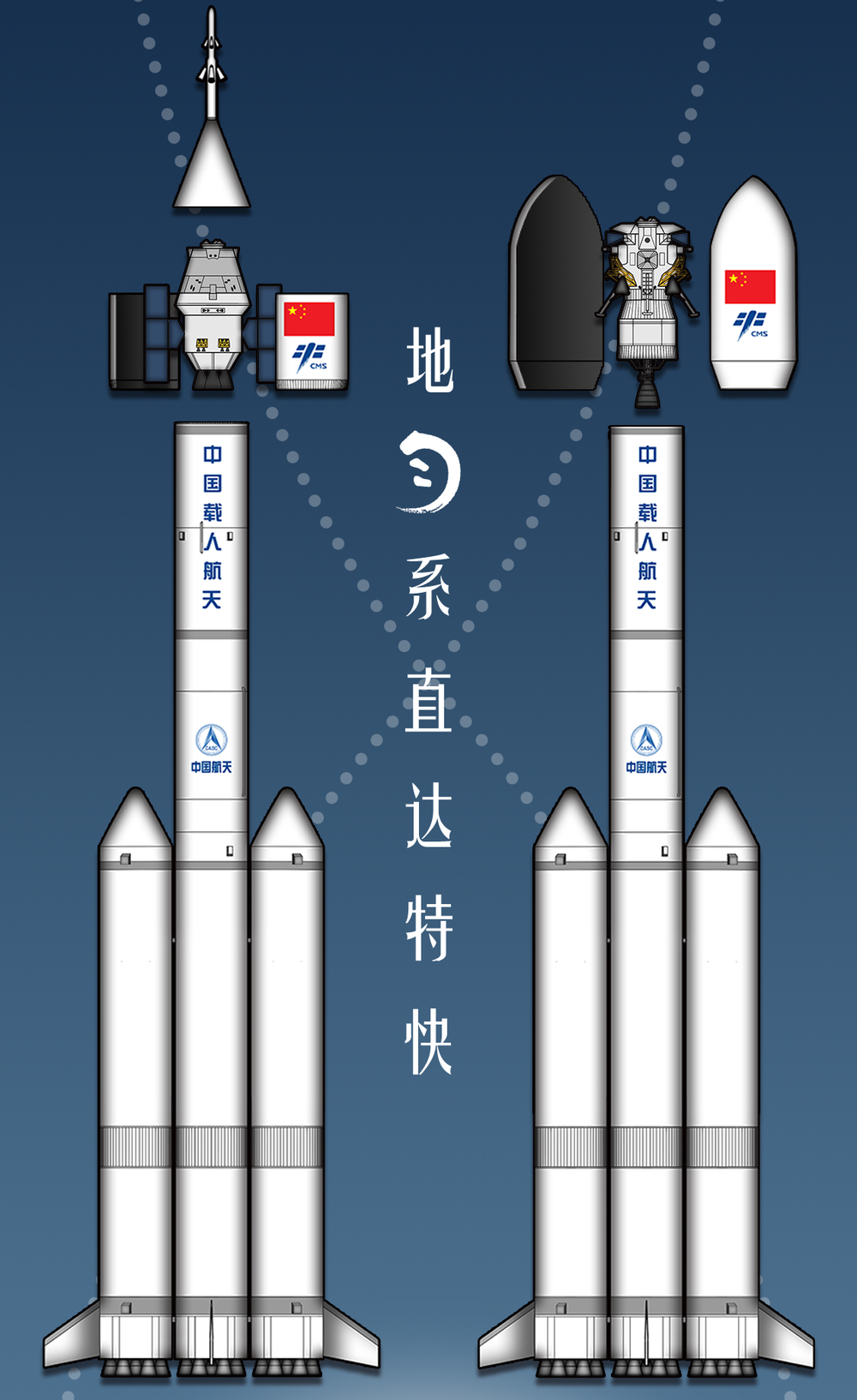
The Long March 10 is a three-stage rocket in development by the China Academy of Launch Vehicle Technology. The rocket plans to burn rocket-grade kerosene and liquid oxygen in its boosters, first, and second stage. The thrid stage currently plans to burn liquid hydrogen and liquid oxygen.
The Long March 10 is currently expected to make its maiden flight in 2027.
There are also plans to recover the boosters of the Long March 10 by making the engines restartable and adding grid fins to guide the boosters. The Long March 10 currently does not plan to have landing legs to land and will instead be caught on 'tensioned wires' with 'hooks' on the booster. This is likely to be downrange on a ship.
The Long March 10's planned payload is believed to be 70,000 kilograms to low Earth orbit, or 27,000 kilograms to a trans-lunar injection.
The boosters currently plan to use seven YF-100K engines generating 892 tons of thrust burning rocket-grade kerosene and liquid oxygen. The combined thrust of the two boosters is 1785 tons of thrust. The expected burn time is currently unknown.
The first-stage is currently planning to use seven YF-100K engines generating 892 tons of thrust burning rocket-grade kerosene and liquid oxygen. Once again the expected burn time is also unknown currently.
The second-stage is currently planning to use two YF-100M engines generating 298 tons of thrust burning rocket-grade kerosene and liquid oxygen. The burn time of the second-stage is also unknown currently.
The third-stage is currently planning to use three YF-75E engines generating 28 tons of thrust burning liquid hydrogen and liquid oxygen. The burn time of the thrid-stage is also currently unknown.
The Long March 10 is expected to weigh up to 2,189,000 kilograms while fully fuelled and be up to 93.2 meters tall when on the launch pad.
Long March 9
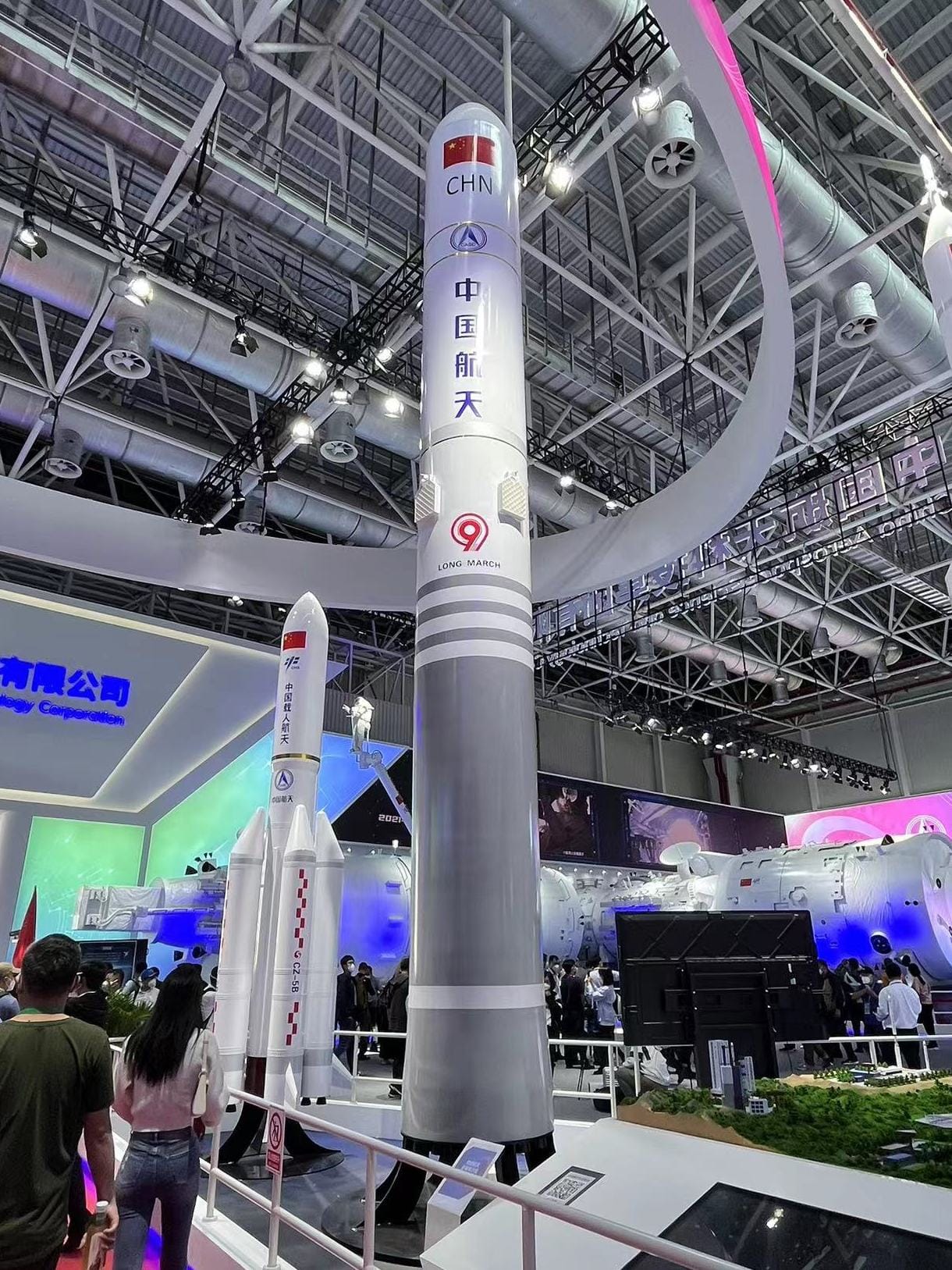
The Long March 9 is either a two-stage or three-stage launch vehicle in development by the China Academy of Launch Vehicle Technology. The rocket currently plans to burn liquid methane and liquid oxygen on the first and second stages. The third stage currently plans to burn liquid hydrogen and liquid oxygen.
The Long March 9 is currently expected to make its maiden launch around 2033.
The Long March 9 currently plans to reuse the first stage. Information on how this first stage will be recovered is currently unknown outside of China.
The Long March 9's planned payload is currently believed to be 150,000 kilograms to low Earth orbit, 54,000 kilograms to a trans-lunar injection, or 44,000 to a trans-martian injection.
The first-stage currently plans to use thirty unnamed engines generating a planned 6000 tons of thrust burning liquid methane and liquid oxygen. Any information on the expected burn time of the first stage is currently unknown outside of China.
The second-stage currently plans to use two unnamed engines, likely an air-startable version of the first-stage engines, generating a planned 400 tons of thrust burning liquid methane and liquid oxygen. Information on expected the burn time of this stage is currently unknown.
The third-stage currently plans to use four YF-79 engines generating 102 tons of thrust burning liquid hydrogen and liquid oxygen. This third stage will only be used for missions beyond low Earth orbit. Information on the burn time of this stage is currently unknown.
The Long March 9 is expected to weigh 4,369,000 kilograms when fully fuelled and be roughly 114 meters tall when on the pad.
Closing remarks from the author
This article is a labor of love for spaceflight and is truly not done as some information is not available in the English-speaking world or Western internet. If you know of any information that should be added feel free to reach out to me via the links on my author page or Linktree.
In the future, this article may be re-released as some rockets retire and others become operational.



